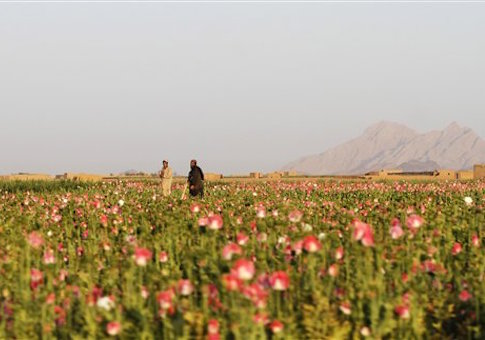Afghanistan is housing the equivalent of 400,000 football fields worth of opium fields, despite the United States having spent billions in taxpayer funds to combat the growth of illicit narcotics, according to the Special Inspector General for Afghan Reconstruction (SIGAR).
While the United States has spent $8.4 billion on counter-narcotics programs in Afghanistan over the years, the country is estimated by the United Nations to have "roughly 500,000 acres, or about 780 square miles, devoted to growing opium poppy," according to SIGAR head John Sopko, who criticized the billions in taxpayer money spent on these programs during a speech last week in New York City.
"As of this March, the United States has provided $8.4 billion-I repeat, billion-for counternarcotics programs in Afghanistan," Sopko said, according to text of his remarks. The Pentagon "and State [Department] give information to SIGAR every quarter on their successes such as drug-treatment centers built, rehab workers trained, tractors donated (31 last year), alternative-livelihood programs executed, drug seizures, and so on. Yet, despite all this, we see record and rising levels of opium production."
Despite these taxpayer-funded efforts, "The United Nations reports that Afghanistan produces 90 percent of the world's illicit opiates," Sopko said.
"That's equivalent to more than 400,000 U.S. football fields, including the end zones," he added. "This enormous acreage devoted to opium feeds a huge tragedy-fostering heroin addiction and crime around the world, including here-as well as a strategic threat. Taxes on opium are a major revenue source for Afghan insurgents, and a powerful prod to corruption among Afghan officials."
The billions the United States spends on counter-narcotics programs reduced Afghanistan’s opium fields by just more than 1 percent in the last year.
"The bottom line—record opium cultivation and production—clearly shows we are not winning the war on drugs in Afghanistan," Sopko said.
Since 2002, Congress has appropriated nearly $110 billion for various Afghanistan reconstruction projects. The money continues to flow despite many instances of fraud and waste identified by SIGAR in recent years.
Security in Afghanistan also continues to deteriorate, making it more difficult for inspectors to provide oversight on the projects receiving U.S. funding.
